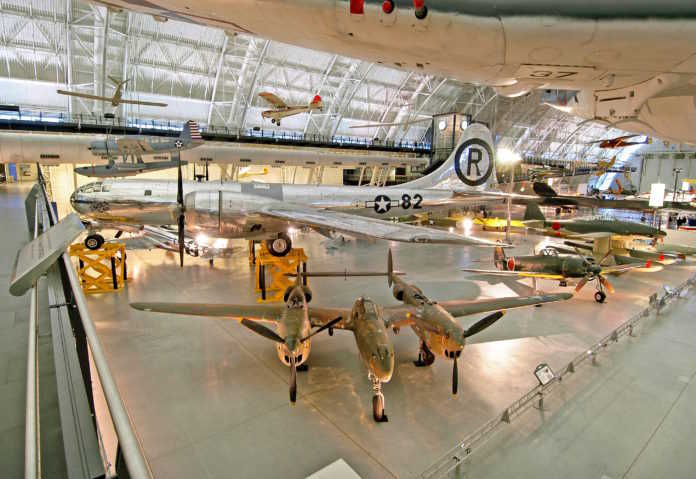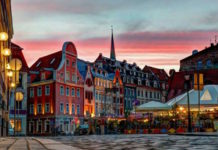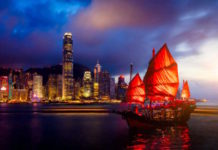
Museums and galleries offer us a glimpse into worlds and lives; cultures and worlds that can seem stranger than fiction. And unlike the dusty, gloomy halls of old, with their scruffy, sad-looking stuffed animals, today’s best museums are immersive, high-tech, multimedia marvels. Serving more than 160 destinations around the world from their Doha hub, Hamad International Airport, Qatar Airways’ crew get to go lots of places, often. They share some views about their favourite museums:
The Smithsonian Institution, Washington DC and Chantilly, VA, USA: The world’s biggest museum, education, and research complex, including 19 museums and the National Zoo. It’s so vast that it can be overwhelming. How big, exactly? Spend one minute, 24/7 looking at objects on display and in 10 years you’ll only have seen 10% of the facility, so it’s simply impossible to see everything on display. Not surprisingly, the Qatar team recommend the Smithsonian National Air and Space Museum, which includes air- and spacecraft that changed the world, like the Wright Brothers’ 1903 Wright Flyer, the Apollo 11 command module Columbia and a Lockheed SR71 Blackbird. The Commercial Aviation exhibition includes an Air France Concorde, the world’s first supersonic airliner, and the space shuttle Discovery. The permanent “America by Air” exhibition traces the role of aviation in the country’s development. Take a virtual tour.
The National Museum of Qatar: Designed by architect Jean Nouvell, the museum is built in the shape of a desert rose crystal, which is found in the surrounding desert. The exhibitions follow roughly chronological order, dealing with the natural history of the Gulf region, and traces the Qatari nation’s evolution and heritage: in essence, a tiny population of mostly Bedouin fishing communities, through the pearl-diving boom and its subsequent decline due to the development of cultured pearls, then the discovery of oil and natural gas, and the massive development and investment that’s borne of the state with Singapore. The Qatar crew’s tip: make a point of seeing the Pearl Carpet of Baroda, woven with 1.5m pearls harvested from the Gulf, as well as rubies, emeralds, sapphires, diamonds and gold thread. The carpet was originally intended to adorn the Prophet’s tomb in Medina. Take a virtual tour.
Zeitz Museum of Contemporary Art Africa (MOCAA), Cape Town: The largest museum of contemporary art from Africa and its diaspora is housed in a former grain silo in the city’s waterfront, with the distinctive massif of Table Mountain as a backdrop. The nine-storey structure and the 56 internal siloes were carved out using steel cables and industrial-diamond to sculpt its concrete interior cut into soaring, fluid shapes. Massive geodesic windows were installed, lending its vast central atrium and surrounding 80 galleries and 100 exhibition areas a cathedral-like air. Exhibitions include the collection of co-founder and co-chair, philanthropist and former Puma CEO Jochen Zeitz, which is on permanent loan. Other must-see attractions include a sculpture garden on the roof overlooking the city, waterfront, the mountain and Robben Island, where liberation icon Nelson Mandela was imprisoned for 27 years. Take a virtual tour.
The Musée de Louvre, Paris: Built in 1793 as a medieval fortress, then the palace of French kings, the Louvre is home to many of art’s canonical masterpieces, including the Mona Lisa, the Winged Victory of Samothrace, Psyche Revived by Cupid’s Kiss, and the Raft of the Medusa. The collection consists of eight curatorial departments: Egyptian antiquities, Near Eastern antiquities, Greek, Etruscan, and Roman antiquities, Islamic art, sculpture, decorative arts, paintings prints and drawings. There are also petite galerie exhibitions centred around a specific theme. The facility has around 380 000 objects from prehistory to the 21st Century, of which around 38 000 are on display at any time. The Louvre is the world’s biggest and most-visited museum, with 7.8m visitors last year, so the Qatar team advises joining the queue early, or better yet, booking a private tour.
Take a virtual tour.
Uffizi Galleries, Florence: Notorious for long queues at its entrance, this is Italy’s most popular art museum (the Vatican Museums attract as many visitors but although it’s in Rome, the city state isn’t Italian), and it rewards patience and perseverance. It’s configured as a long labyrinth of galleries in a U-shaped Renaissance palace. The exterior of the building is imposing, and it’s meant to be: Cosimo de’ Medici, the ruler of the city, had it built as a grandiose statement of his presence and authority next to Palazzo Vecchio, Florence’s seat of power. It accommodated the city’s magistrates, the heads of the Florentine Guilds, a cavernous theatre and the offices (hence “Uffizi”) of the judiciary. And the art? Michaelangelo, Da Vinci, Raphael, Titian, Caravaggio, Rembrandt many more. A highlight: Botticelli’s The Birth of Venus, which caused an uproar when first unveiled because it was the first secular Renaissance painting to depict nudity, which had previously been used to portray sin.
Take a virtual tour.















